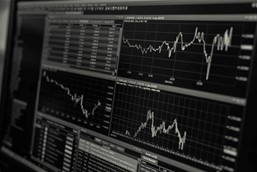
By: Eric Ettorre
Liquidity is a key consideration for investors in any capital market, but investors face growing obstacles to liquidity in the bond market.[1] This blog concerns the significance of the bond market moving to an electronic format and the regulatory infrastructure that, thus far, ceases to exist. “As a result of COVID-19, the government is buying and selling treasury bonds, sparking these processes.”[2] In turn, there are few regulations on electronic bond market venues.
Unlike most stocks, bonds are traded over-the-counter, but the bond trade market is advancing by utilizing electronic trading. Electronic trading, however, is fragmenting financial companies that compete to find buyers and sellers.[3] Similarly, as technology and corporate finance evolve, measuring bond markets is growing more complex due to competing electronic trading venues and an inability to standardize reporting efforts.[4]
In early October, the U.S. Securities and Exchange Commission (“SEC”) moved to correct the bond markets’ reporting issues. The Fixed Income Market Structure Advisory Committee (the “Committee”) proposed that the SEC adopt new reporting standards to improve transparency and allow traders to decide which electronic marketplace to use.[5] The Committee also proposed that the SEC adopt a clear definition of electronic trading in corporate and municipal bond markets.[6] A uniform definition could capture a broader range of trades, avoid double counting them, and standardize reporting across several different venues.[7]
The proposal raises high stakes for different publicly listed and traded electronic bond trading platforms like MarketAxess Holdings, Inc., Tradeweb Markets, Inc., and Intercontinental Exchange, Inc.[8] Experts caution the SEC not to ignore that supporting one or more of these publicly-traded bond trading platforms will have either good or bad consequences for its investors depending on the rule the SEC adopts.[9] Ultimately this perpetuates an unfair advantage to platforms the SEC endorses.[10] However, the Committee highlights the benefits of supporting one or more platforms since uniting the reporting data will give market participants and regulators an accurate picture of the market through increased transparency and investor confidence in the workings of the newly popular electronic bond market.
Electronic bond trading has grown substantially since the COVID-19 market crisis as investors rushed to raise cash by selling bonds.[11] The increase was largest in high-yield bonds, in which twenty-two percent were traded electronically compared to seventeen percent in August.[12] Electronic trading during COVID-19 exposed the shortfalls in municipal and corporate bond market liquidity.[13] Moreover, amid an election year, U.S. government-bond yields are higher and continue to climb because, for debt investors, if one political party solidifies and unifies control over the government, it easier to expand the federal budget deficit through tax cuts or spending programs.[14] Bigger deficits help raise yields because they bolster the supply of bonds as the government borrows more and if the economy is boosting economic growth and inflation, bonds become less attractive to debt investors.[15] Regardless, addressing the issues associated with electronic bond trading is a crucial and key step toward fulfilling the SEC’s mission of protecting investors and facilitating capital formation.[16]
[1] Jonathan R. Macey & David D. Haddock, Shirking at the SEC: The Failure of the National Market System, 1985 U. Ill. L. Rev. 315, 325–26 (1985) (explaining the importance of liquidity).
[2] Colby Smith & Richard Henderson, Investors Say Recent Bond Market Sell-Off May Be Just the Start, Fin. Times (Oct. 8, 2020), https://www.ft.com/content/6369516f-d4d1-4a31-817c-417585b0c24a.
[3] Matt Wirz, SEC Committee Tackles Disorderly Electronic Bond Trade Reporting, Wall St. J. (Oct. 7, 2020, 5:24 PM), https://www.wsj.com/articles/sec-committee-tackles-disorderly-electronic-bond-trade-reporting-11602092914.
[4] See id.
[5] See Spotlight on Fixed Income Market Structure Advisory Committee (FIMSAC), U.S. Sec. & Exch. Comm’n (Oct. 13, 2020) https://www.sec.gov/spotlight/fixed-income-advisory-committee.
[6] See Wirz, supra note 3.
[7] See id.
[8] See id.
[9] See id.
[10] See id.
[11] See id.
[12] See id.
[13] Smith & Henderson, supra note 2.
[14] Sam Goldfarb, Investors Prepare for Higher Treasury Yields as Election Looms, Wall St. J. (Oct. 13, 2020, 4:11 PM), https://www.wsj.com/articles/investors-prepare-for-higher-treasury-yields-as-election-looms-11602581400?mod=md_bond_news.
[15] See id.
[16] About the SEC, U.S. Sec. & Exch. Comm’n (Nov. 22, 2016), https://www.sec.gov/about.shtml.

